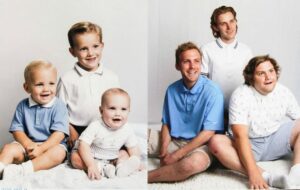Nikola Tesla was a Serbian-American inventor, electrical engineer, mechanical engineer, and futurist. He is most well-known for his involvement in the development of the present alternating current (AC) energy delivery system. In the late 19th and early 20th centuries, he made several ground-breaking advances in the subject of electromagnetism, for which he is well renowned. The Tesla coil and the alternating current motor are two of his most famous creations. He also supported the usage of radiant energy and wireless communication. After his passing, Tesla’s work was mostly forgotten, but since the 1990s, interest in him has grown again in popular culture.

The early life of Nikola Tesla
On July 10, 1856, Nikola Tesla was born in Smiljan, Croatia, which at the time belonged to the Austro-Hungarian Empire. He was the fourth of Milutin Tesla’s five children with Djuka Mandic, another inventor. Milutin Tesla was a Serbian Orthodox priest.
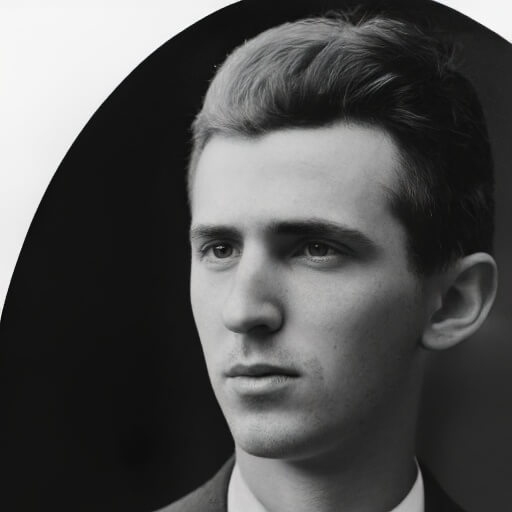
Tesla was enthralled with electricity and mechanics as a kid. He devoured literature on electrical engineering and would frequently dabble with gadgets. He was a standout student who excelled in physics and math.
With the aid of American businessman and inventor Charles Batchelor, Tesla immigrated to the country in 1884. With just four cents in his pocket and a letter of introduction to renowned businessman and scientist Thomas Edison, he landed in New York City.
Tesla briefly worked for Edison before the two men fell out over their opposing views on electrical engineering. While Edison supported direct current, Tesla supported the use of alternating current (AC) (DC). Tesla left Edison’s employ as a result of this argument and went it alone.

Despite the first setback, Tesla was able to find employment quite quickly and started working on the alternating current system that would ultimately become the norm for the production, transmission, and distribution of electricity. He proceeded to work on other other innovations as well, including as the Tesla coil, which is still employed in modern radio technology.
Early in his life, Tesla was known for his love for invention and creativity as well as his constant quest of knowledge. He overcame many obstacles and disappointments but never gave up on his goals, becoming one of the most significant individuals in the history of electrical engineering.
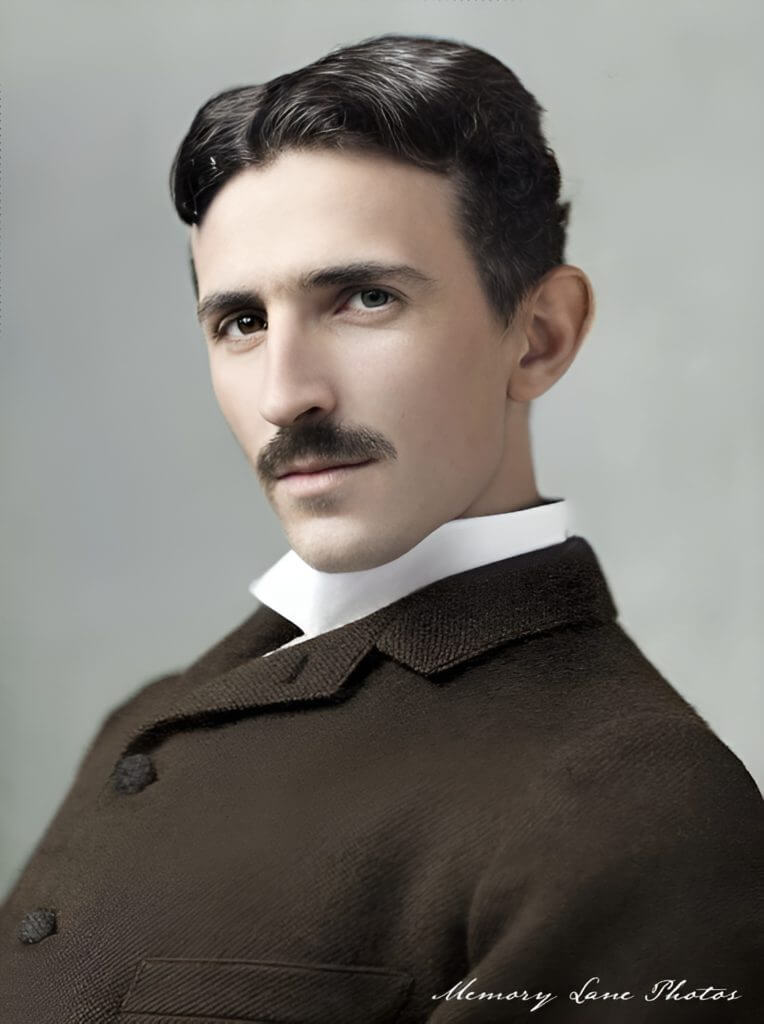
The most famous Inventions of Nikola Tesla
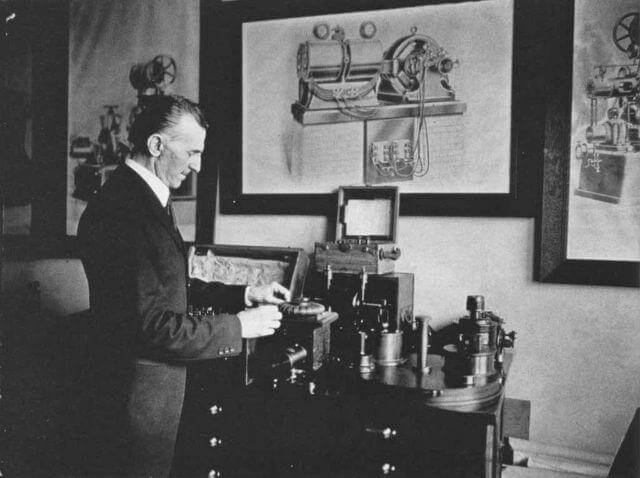
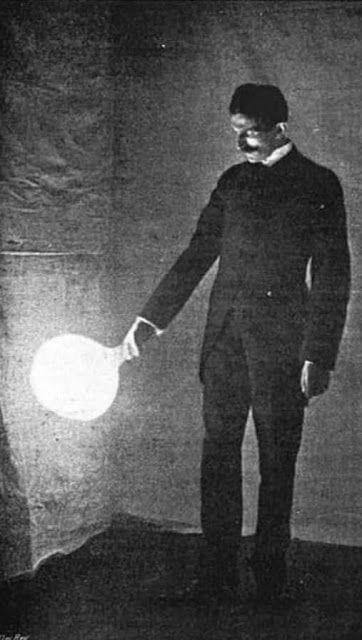
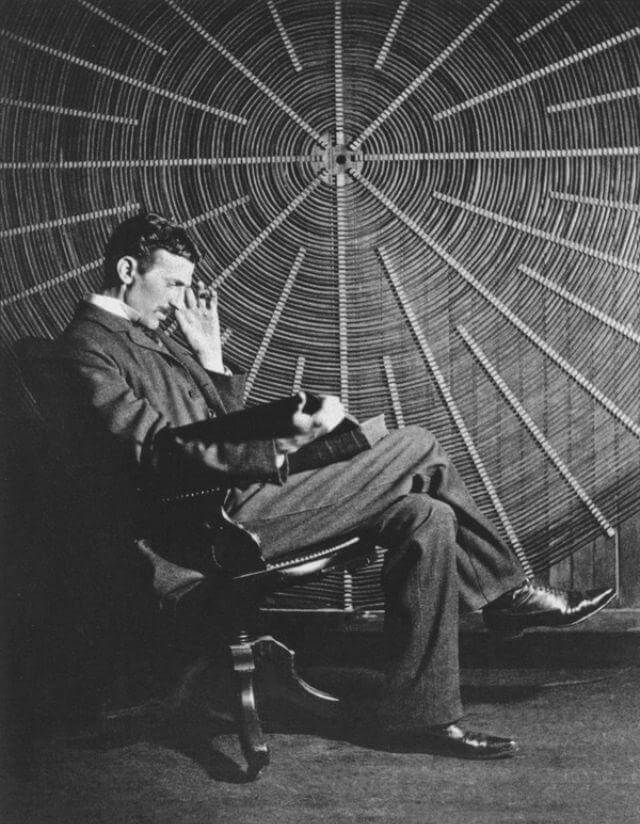
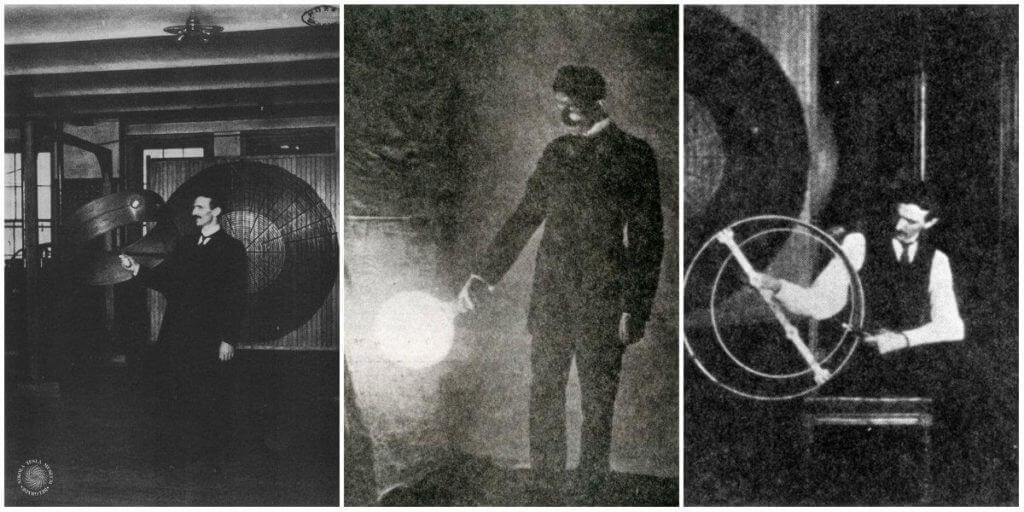
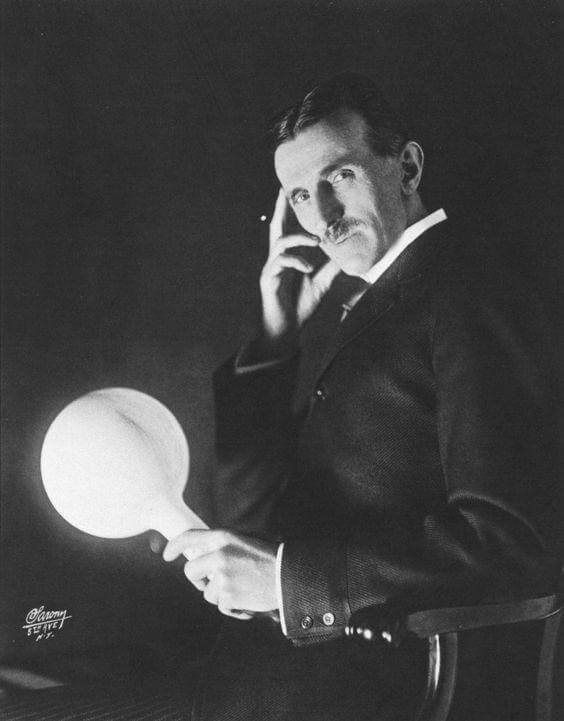
AC Power
The invention of alternating current (AC) power by Nikola Tesla in the late 19th century was a revolutionary breakthrough in the field of electrical engineering. Prior to Tesla’s work, the primary method of generating and transmitting electricity was direct current (DC), which had several limitations, such as not being able to transmit over long distances. Tesla’s AC system, however, was able to overcome these limitations and paved the way for the widespread use of electricity in homes and industries.
Tesla’s AC power system had several advantages over DC power, like being able to be easily transformed to different voltages using a transformer, which made it more versatile and efficient, and being able to power motors, which was not possible with DC power.
Despite the benefits of Tesla’s AC power system, it faced significant resistance from the established electrical industry, which was heavily invested in DC power. However, despite the resistance, Tesla’s AC power system ultimately prevailed and became the standard for the generation, transmission, and distribution of electricity.
Tesla Coil
A form of electrical circuit developed by Nikola Tesla in the late 19th century is a Tesla coil. It is employed to generate alternating current with high frequency, low current, and high voltage. A primary coil and a secondary coil, each with its own capacitor, make up a Tesla coil. While the secondary coil is linked to a spark gap, the primary coil is connected to a power source. An electrical current passes through the primary coil when the power is switched on, producing a magnetic field. This magnetic field causes the secondary coil’s electrical current, which is subsequently amplified by the capacitor, to flow. A high-voltage electrical discharge that crosses the spark gap as a consequence may be utilized for a number of things, including wireless communication and entertainment displays. Tesla himself proved this in 1893 when he used a tesla coil to wirelessly light up lightbulbs from a distance.
Radio
Tesla was working on developing a wireless communication system. At the time, he was experimenting with radio waves, which he believed could be used to transmit messages over long distances. He had built a laboratory in Colorado Springs where he conducted a series of experiments to test the potential of radio waves. During his experiments, Tesla made several significant breakthroughs, including the discovery of a new type of electrical discharge, which he called “Tesla’s radiant energy.” He also discovered that radio waves could be reflected and refracted by the ionosphere, which could be used to transmit messages around the world. However, before he could complete his work, his laboratory burned down, destroying much of his equipment and research. Shortly after the incident, Marconi announced that he had successfully transmitted a radio signal across the English Channel. Marconi was able to secure a patent for his wireless telegraphy system and is widely credited with the invention of radio.
While it is true that Tesla was working on a similar invention, it is not clear if his invention would have surpassed Marconi’s in strength. It is possible that Tesla’s design was more advanced and capable of transmitting signals over longer distances, but this can not be confirmed as his work was destroyed in the fire and his ideas were not developed enough to be patented.
Hydroelectric Power
Hydroelectricity, or the production of electricity from flowing water, was invented by Nikola Tesla. In order to generate and distribute alternating current (AC) utilizing numerous currents of various phases, he created the Tesla Polyphase System. He collaborated with George Westinghouse to construct Niagara Falls’ first hydroelectric power plant, which delivered energy over a 25-mile span. This showed the potential of hydroelectric power and contributed to the dominance of alternating current as a power producing technique. Tesla received multiple patents for hydroelectric power systems and generators.
Induction Motor
Nikola Tesla is credited with the invention of the induction motor. An induction motor is a type of electric motor that uses electromagnetic induction to convert electrical energy into mechanical energy. The motor consists of a rotor (the rotating part) and a stator (the stationary part). The stator contains a series of coils that create a magnetic field, while the rotor contains a series of conductors that are exposed to the magnetic field. When an alternating current is applied to the stator coils, it creates a rotating magnetic field that induces an electrical current in the rotor conductors. This, in turn, creates a mechanical force that causes the rotor to rotate. Tesla’s invention of the induction motor was a significant breakthrough in the field of electrical engineering. Unlike previous motors, the induction motor did not require a direct connection to the power source, which made it more efficient and easier to use. Furthermore, it could be easily controlled using a variable frequency drive, which allowed for precise speed control.
Tesla first demonstrated his invention of the induction motor at the 1891 International Electrical Exhibition in Frankfurt, and later in 1893, at the Chicago World’s Fair. He received several patents for the invention, and it was later commercialized by the Westinghouse Electric Company, where it was used in a wide range of industrial and domestic applications.
Tesla’s invention of the induction motor was a major step forward in the development of electric motors, and it is still widely used today in a variety of applications including appliances, fans, pumps, and industrial machinery.
What was the War of Currents between Edison and Tesla?
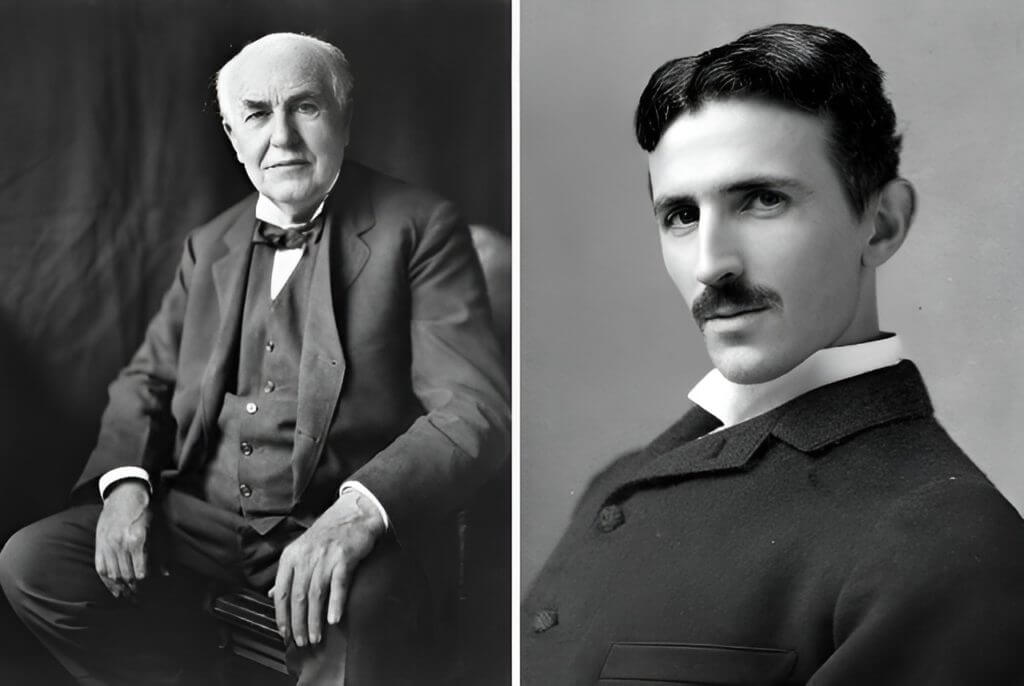
Thomas Edison and Nikola Tesla were two of the most prominent inventors and electrical engineers of the late 19th and early 20th centuries. They both made significant contributions to the field of electrical engineering, but they had very different ideas about the best way to generate and distribute electricity. This led to a fierce competition between the two, known as the “Battle of the Currents,” which lasted for several years.
The main point of contention between Edison and Tesla was the type of current used for electrical power generation and distribution. Edison was a proponent of direct current (DC), which he believed was safer and more efficient than alternating current (AC). He had invested heavily in the development and promotion of DC technology, and had even set up the Edison Electric Light Company to provide DC-powered lighting to homes and businesses.
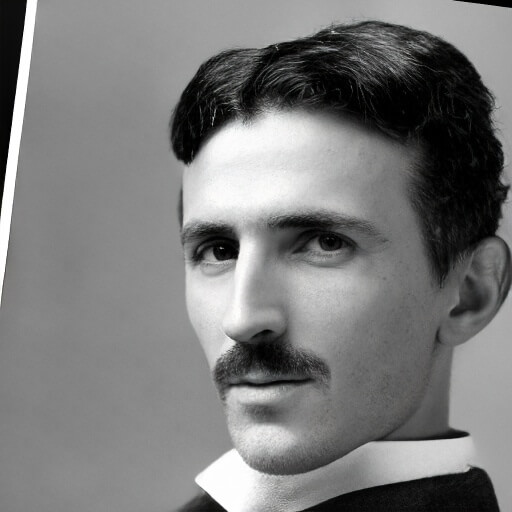
On the other hand, Tesla believed that AC was the superior technology. He had developed the Tesla Polyphase System, a method of generating and distributing AC electricity that was more efficient and capable of transmitting power over long distances. He argued that AC could be easily controlled and converted to different voltages, making it more versatile than DC.
Edison, recognizing the potential of AC, actively campaigned against it, by spreading misinformation, and even conducting dangerous public demonstrations, where he electrocuted animals to show the “dangers” of AC. He argued that AC was dangerous, citing several accidents that had occurred with early AC systems. He also claimed that AC would never be able to compete with DC on a large scale, arguing that it was too difficult to control and not efficient enough for widespread use.
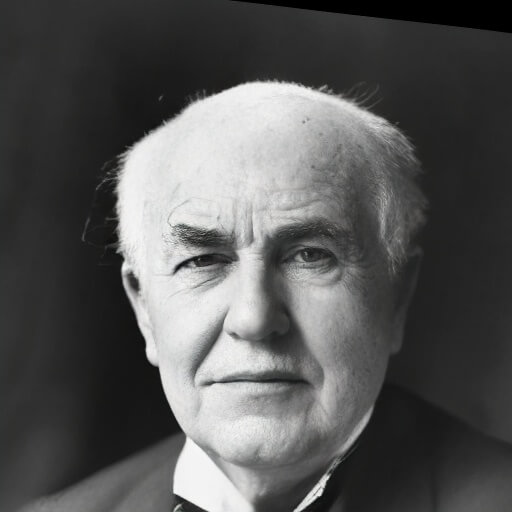
Despite Edison’s efforts, AC technology eventually emerged as the dominant method of power generation and distribution. The success of the Tesla Polyphase System and the invention of the induction motor, which could be powered by AC, helped to establish AC as the standard for electrical power. This led to the eventual demise of DC as a practical system of electrical power distribution.
In conclusion, Thomas Edison and Nikola Tesla clashed during the “Battle of the Currents” due to their differing opinions on the best way to generate and distribute electricity. Edison was a proponent of direct current, while Tesla believed that alternating current was the superior technology. Edison’s campaign against AC, ultimately failed, and AC became the dominant method of electrical power generation and distribution.
How many patents had Nikolai Tesla?
Nikola Tesla was awarded over 300 patents during his lifetime, many of which were related to his work in the field of electrical engineering. These patents covered a wide range of inventions and discoveries, including the Tesla coil, the Tesla Polyphase System, the induction motor, and various other electrical devices and systems. Some of his patents were issued in the United States, where he spent much of his career, while others were issued in other countries, such as Canada, Great Britain, and France.
Some of Tesla’s most notable patents include:
- U.S. Patent No. 381,968, “Method of and Apparatus for Controlling Mechanism of Moving Vessels or Vehicles” (1887) – related to a remote control boat
- U.S. Patent No. 381,970, “Method of and Apparatus for Transmitting Electrical Energy” (1887) – related to the Tesla coil
- U.S. Patent No. 381,970, “System of Transmission of Electrical Energy” (1890) – related to the Tesla Polyphase System
- U.S. Patent No. 400,190, “Method of Operating Arc-Lamps” (1889) – related to a system for operating arc lamps
It’s worth noting that not all of Tesla’s patents were successful commercial products and not all of them were granted worldwide. Some of them were not recognized or were not profitable. However, many of his patents have had a lasting impact on the world of science and technology and have been widely used in a variety of applications.
In conclusion, Tesla was awarded over 300 patents during his lifetime, covering a wide range of inventions and discoveries. Some of his patents have had a lasting impact on the field of electrical engineering and have been widely used in a variety of applications.
When and how did Nikola Tesla die?
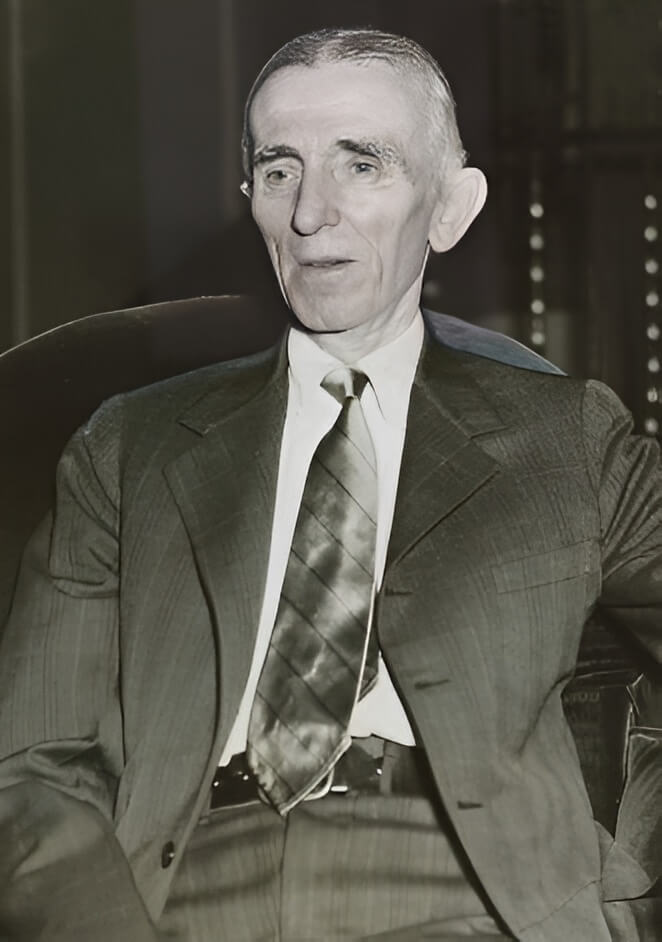
Nikola Tesla died on January 7, 1943, at the age of 86. He died in a hotel room in New York City, where he had been living for the last ten years of his life. The cause of death was officially listed as coronary thrombosis, which is a blood clot in the heart.
In the years leading up to his death, Tesla had been living in relative poverty and obscurity. Despite his many inventions and contributions to science, he was never able to achieve financial success and spent much of his later years living in cheap hotels. He had been suffering from a variety of health problems, including heart disease, and had become increasingly reclusive.

Tesla’s funeral was held on January 12, 1943, at the Cathedral of Saint John the Divine in New York City. The funeral was attended by a small number of friends, family members, and admirers. After the funeral, Tesla’s ashes were placed in a golden urn and interred at the Nikola Tesla Museum in Belgrade, Serbia.
After his death, many of Tesla’s papers and inventions were seized by the U.S. government, under the instruction of the FBI, due to the belief that his work may have had military implications. Some of his papers were later returned to his family, but many were never recovered.
In conclusion, Tesla died in New York City on January 7, 1943, due to a blood clot in the heart. His death was not widely reported and he died in relative obscurity and poverty. Despite this, his contributions to the field of science and technology have since been widely recognized and celebrated.



